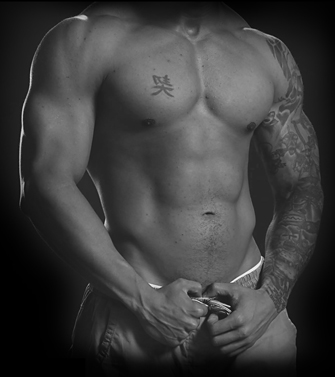 Gynecomastia is a major aesthetic concern for men that makes them self conscious and withdrawn. Gynecomastia usually occurs due to reasons such as heredity, obesity, hormonal changes, Gilbert’s syndrome and consumption of drugs that either increase estrogen production or hamper testosterone production. This condition can be addressed through safe and effective Male breast reduction procedure.
Gynecomastia is a major aesthetic concern for men that makes them self conscious and withdrawn. Gynecomastia usually occurs due to reasons such as heredity, obesity, hormonal changes, Gilbert’s syndrome and consumption of drugs that either increase estrogen production or hamper testosterone production. This condition can be addressed through safe and effective Male breast reduction procedure.
Gynecomastia treatment involves surgically removing excess fat and skin and improving the position and size of the areolas. Advanced body sculpting devices such as BodyTite RFAL (radiofrequency assisted liposuction) device are used at reputable plastic surgery facilities in the U.S to carry out the procedure. These devices ensure effective fat reduction and considerable skin contraction. Plastic surgeons focus on removing excess localized fat deposits, excess breast skin and excess glandular tissue development.
Male bodybuilders who are physically fit also tend to develop gynecomastia, which mainly results from the use of over-the-counter hormones and anabolic steroids.
A new study published in the February issue of Plastic and Reconstructive Surgery examines gynecomastia in physically fit male bodybuilders and discusses the optimal surgical approach to breast reduction. The patients of this particular group experience heightened symptoms such as pain and tenderness related to this condition, the authors say.
This study involved the charts of 1574 male bodybuilders, who underwent surgical treatment for gynecomastia between 1980 and 2013. They belonged to the age group 18 – 51. 1073 of these patients were followed up for 1 – 5 years. Liposuction was performed only in less than 2% of these men because of low body fat. For the rest of the patients, 95% or more of the glandular tissue was removed using subtotal excision subcutaneous mastectomy. The main patient objective was the removal of the entire gland. Here are some of the significant results that emerged from the study.
- Patient satisfaction survey results showed 98% satisfaction with the aesthetic outcomes.
- The observed rate of hematoma was 6%. However, it showed a 50% reduced rate of hematomas during the latter 15 years compared with the first 15 years. This is obviously the result of more effective verbal and written instructions the surgeons provided for pre- and post surgical care.
- Exploratory surgical intervention was needed only for less than 3% of the hematomas, while all others were successfully treated via needle aspiration.
- There were no surgical site infections, contour deformities or major complications that required hospitalization.
- No patient required a transfusion.
The study noted that those men who use androgenic steroids and unregulated (over-the-counter) supplements are more likely to experience intra-operative bleeding. In addition, the authors highlight the merits of direct excision of glandular tissue under direct vision, and caution against piecemeal excisions and any injury to the underlying pectoral fascia. Most importantly, the authors highlighted the need for qualified and experienced surgeons to provide this Male breast reduction surgery in body builders as it is more challenging due to the larger amount of glandular tissue that has to be removed, compared to other men with gynecomastia.
